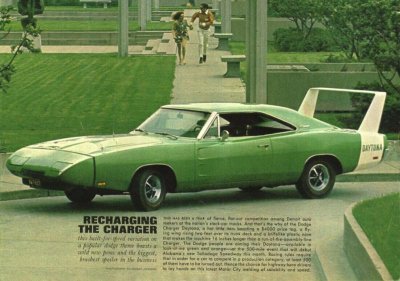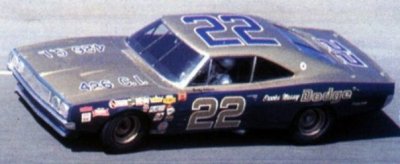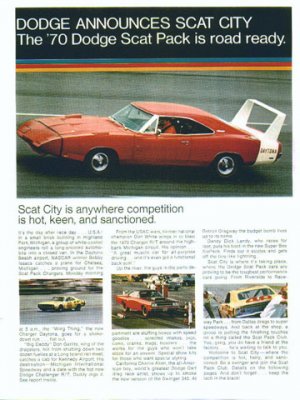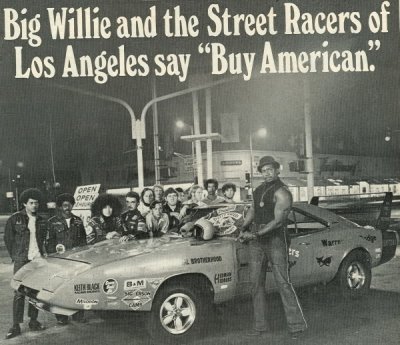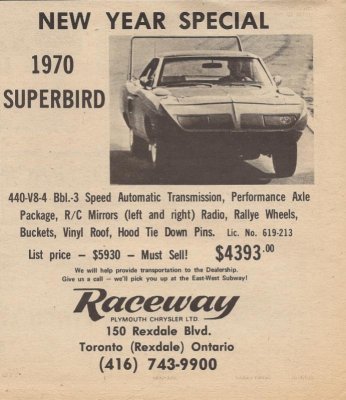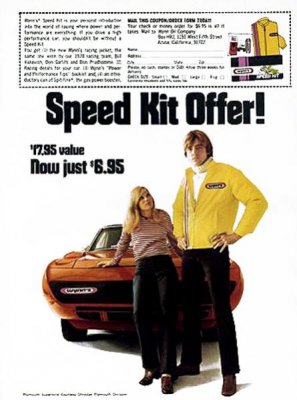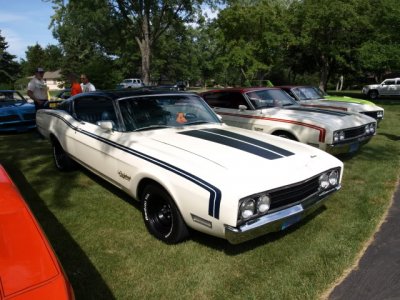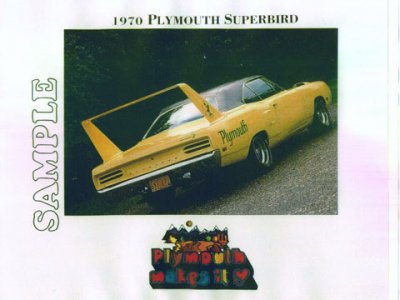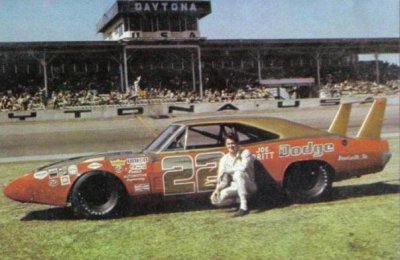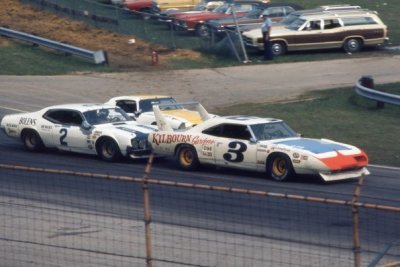The story on the winged cars all goes back to Ford. Richard Petty had been driving for Plymouth for years when Ford lured him away with their Talledega Torino in the late 1960s. The Dodge boys developed the Daytona to beat the Talledega, and Plymouth developed the Superbird to lure Petty back to Plymouth... and it worked. He came back and drove the famous Petty Blue 43 Superbird in 1970.
Since all this happened back when NASCAR drivers actually drove real stock cars, Plymouth was required to build one Superbird for every Plymouth dealership in the country in order to qualify the car for racing, so Plymouth built about 1,870 (the final number is still in dispute since they also made some R&D cars), which was the number of dealerships in the US in 1970. If you go back and check the NASCAR race stats for 1970, you'll see that Superbirds and Daytonas finished first, second, and third in just about every race. This domination of the track led NASCAR officials to prohibit any winged car (Daytonas and Superbirds) from having an engine over a certain size, which meant the winged cars could no longer have 426 Hemis in them, and that was the end of the winged cars. This is why they were only made for one year and why so few were made.
One of the most telling things about the uniqueness of the Superbird came from a quote by Petty in the late 1990s. Some NASCAR sports writers were polling drivers about how they would want their cars set up if they could do anything they wanted. The drivers said they would want to lower the chassis on their Taurus, get a bigger engine in the Chevy, change the spoiler design, etc. The writers asked Petty, who was retired by then, and he said "I would want my 70 Superbird, exactly like it was."
As to price, since these cars were made for one year only, in very limited numbers, and their racing pedigree, they are at the top of the collectible market. The good news is their prices are starting to come down a smidge (relatively speaking). I've seen a couple of 440 Superbirds selling for $100,000 to $125,000, which is down from the $200,000+ they were selling for at their peak.

